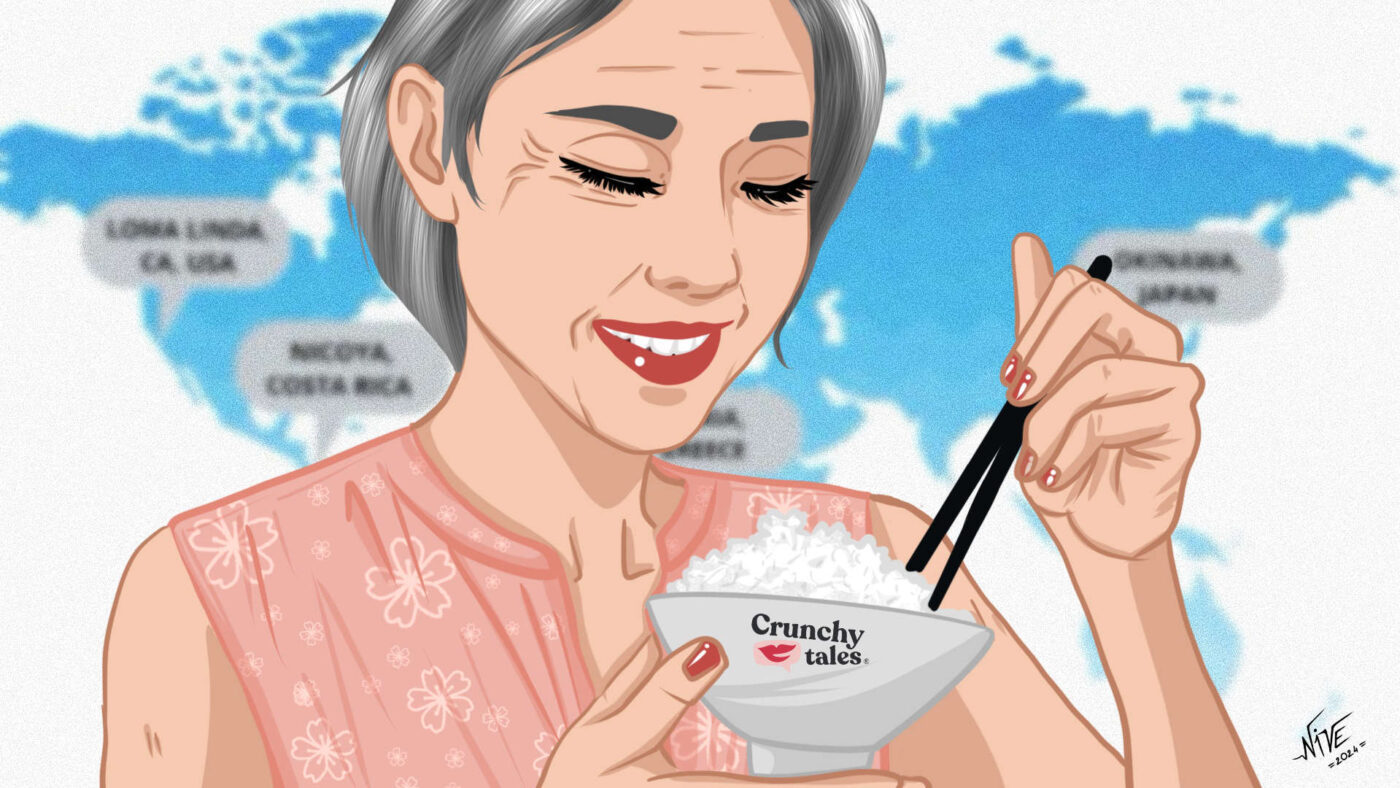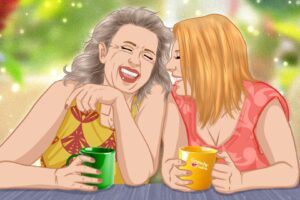How to Maximize Your Longevity With the Blue Zones Diet
Have you heard of the Blue Zones diet? It’s a way of eating that has been linked to longevity and promises to help you remain healthy and sharp.
Actually, researchers agree there is no direct roadmap to becoming a SuperAger however there are some positive habits you can adopt from people who live in these areas of the world to bolster your cognitive and physical functioning well into your later years.
In this article, we’ll dive into what the Blue Zones diet is, its benefits, and how you can incorporate it into your own life.
What is the Blue Zones Diet?
The concept of the Blue Zone was initially coined by Gianni Pes, an Italian epidemiologist, and Michel Poulain, a Belgian demographer. They were studying mortality rates in Sardinia when they marked regions with high longevity in blue during the early 2000s.
In the province of Nuoro on the island, they discovered a cluster of exceptionally long life expectancies. Collaborating with the American journalist Dan Buettner, they further identified a few other regions worldwide such as Okinawa, Japan; Nicoya, Costa Rica; Ikaria, Greece; and Loma Linda, California. Their work eventually led to the publication of a highly successful book “The Blue Zones, Lessons for Living Longer From the People Who’ve Lived the Longest“.
“The essence of Blue Zones is people live a long time not because of the things we think. They’re not on diets, they’re not on exercise programs, they don’t take supplements,” Buettner explained. “They don’t pursue health, which is a big disconnect in America, because we think health is something that needs to be pursued.”
Although common diets in the five regions differ slightly from each other due to cultural, historical, religious and social traditions, people from these areas mostly focus their meals on whole, plant-based foods. This means that most of their diet consists of fruits, vegetables, whole grains, legumes, and nuts. Animal products, such as meat and dairy, are consumed in moderation and processed foods are kept at bay.
When it comes to the specific elements of the diet, however, it’s fascinating to observe the unique dietary habits of different regions. Take the Greek island of Ikaria, for example. The locals there enjoy a few cups of tea and coffee each day, and this interestingly seems to be linked to a lower risk of cardiovascular disease in the area.
On the other hand, the people of Okinawa have caught the attention of many due to their exceptional longevity. Two ingredients that stand out in their diet are the sweet potato and the bitter melon, which are believed to have properties that contribute to a longer life.
While rice is the primary source of carbohydrates in most of Japan, Okinawa has embraced the sweet potato as its go-to carb since the 1600s. Unlike white bread and other similar foods, the sweet potato has a low glycemic index, meaning it releases energy into the bloodstream at a slower pace.
How Can the Blue Zones Diet Benefit Your Health?
A long, healthy life is probably due to a combination of biology, environment and personal agency. While there are much more detailed insights revealed in the Netflix docuseries and the book, of course, this diet plays an important role as it leads to several health benefits, including:
- Improved heart health: The emphasis on plant-based foods and moderation can help lower cholesterol and blood pressure, reducing the risk of heart disease.
- Weight management: The focus on whole, unprocessed foods and moderation can help maintain a healthy weight.
- Reduced risk of chronic diseases: The Blue Zones Diet is rich in nutrients and antioxidants, which can help prevent chronic diseases such as diabetes, cancer, and Alzheimer’s.
- Increased longevity: People in the Blue Zones are known for their long lifespans, and the Blue Zones Diet may play a role in this, with many living well into their 90s and even 100s.
How to Incorporate the Blue Zones Diet into Your Life
You don’t have to move to a Blue Zone to reap the benefits of the Blue Zones Diet. Here are some helpful tips to get you started.
1. Start with Small Changes
Instead of completely changing your diet, begin by making small adjustments. For instance, try adding one new plant-based meal to your weekly menu. This gradual approach will make it easier to adapt to the diet in the long term. Aim for at least 5 servings of fruits and vegetables per day.
2. Focus on Whole Foods
The key to the Blue Zones diet is emphasizing whole, unprocessed foods. Stay away from pre-made meals (frozen pizza, microwavable dinners) or ready-to-eat foods like deli meat, potato chips, fried chicken or store-bought cakes and doughnuts. These products contain additives and preservatives and are often high in sugar and trans fats.
3. Experiment with New Recipes
Eating the same meals every day can become monotonous, so don’t hesitate to explore new recipes. From “Warm Lentil, Sweet Potato, and Arugula Salad” to “Italian Vegetable Sheet Pan Bake“, we’re sure you’ll find more than one to try and enjoy.
4. Practice Moderation
Moderation is key in the Blue Zones Diet. People from these areas typically eat until they are 80% full, which helps them maintain a healthy weight and avoid overeating. In Japan, in particular, they also have a saying, “Hara Hachi Bu”, which means “eat until you are 80% full”.
Beyond the diet
Clearly, the longevity of the Blue Zones cannot be attributed to just one factor, but rather a combination of many. Some of them are shared between the regions, while others are unique to each place. Although it may not be as exciting as discovering a magical anti-ageing potion or superfood, there is still much we can learn from these findings.
Incorporating moderation in eating, consuming plenty of fruits and vegetables, staying physically active, enjoying coffee and tea, and finding solace in spiritual practices are all things we can include in our daily lives.
When studying why people in the Blue Zones have longer and healthier lives, it is important to consider lifestyle factors beyond just diet. Residents of these areas often engage in activities like gardening, walking, and doing physical chores as part of their daily routines.
They also prioritize rest and getting a good night’s sleep. For example, Ikarians take mid-afternoon naps, while the Loma Linda community dedicates 24 hours every week to rest. Sufficient sleep not only helps reduce stress levels and maintain mental well-being but also has positive effects on physical health.
Furthermore, those living in the Blue Zones have strong social networks and regularly share meals with family, friends, and neighbours. It is well known that isolation and loneliness can contribute to poor health, highlighting the importance of fostering healthy communities and relationships.
In conclusion, the Blue Zones Diet is not a strict diet plan, but rather a set of principles and guidelines for healthy eating.
“The average American leaves more than a decade of life on the table by living the way we’re living. Blue Zone living is not a biohack, it’s not an anti-ageing gimmick, it’s not any of the other maelstroms designed to make money off of you“, explains Dan Buettner. “These are real people who’ve lived an identifiable way for hundreds of years, and they have a very average set of genes, so there’s no reason we can’t achieve their outcomes if we pay closer attention to our own lives.”
Are you ready to become the next SuperAger?
Like this post? Support Us or Sign up tforour newsletter to get more articles like this delivered straight to your inbox!





